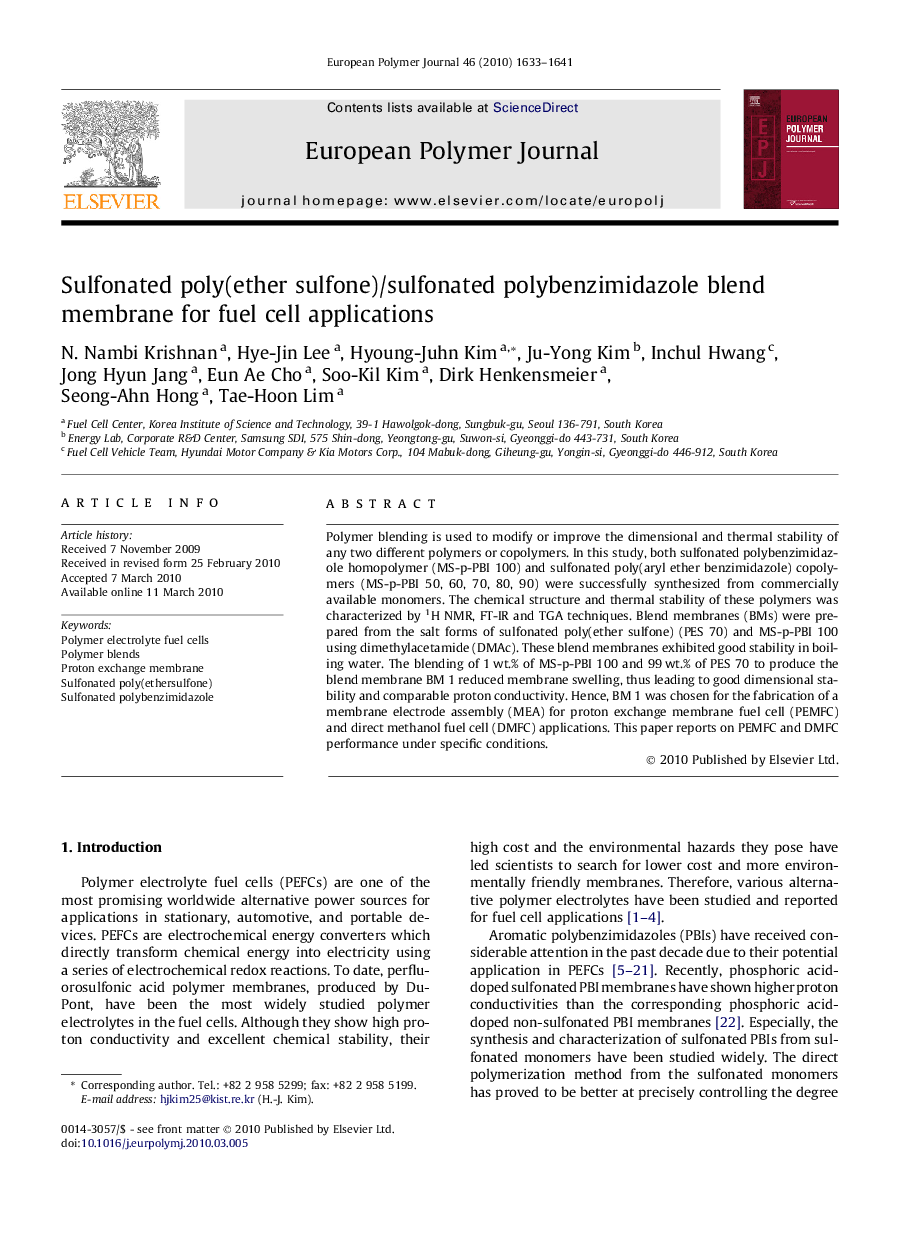| Article ID | Journal | Published Year | Pages | File Type |
|---|---|---|---|---|
| 1402252 | European Polymer Journal | 2010 | 9 Pages |
Polymer blending is used to modify or improve the dimensional and thermal stability of any two different polymers or copolymers. In this study, both sulfonated polybenzimidazole homopolymer (MS-p-PBI 100) and sulfonated poly(aryl ether benzimidazole) copolymers (MS-p-PBI 50, 60, 70, 80, 90) were successfully synthesized from commercially available monomers. The chemical structure and thermal stability of these polymers was characterized by 1H NMR, FT-IR and TGA techniques. Blend membranes (BMs) were prepared from the salt forms of sulfonated poly(ether sulfone) (PES 70) and MS-p-PBI 100 using dimethylacetamide (DMAc). These blend membranes exhibited good stability in boiling water. The blending of 1 wt.% of MS-p-PBI 100 and 99 wt.% of PES 70 to produce the blend membrane BM 1 reduced membrane swelling, thus leading to good dimensional stability and comparable proton conductivity. Hence, BM 1 was chosen for the fabrication of a membrane electrode assembly (MEA) for proton exchange membrane fuel cell (PEMFC) and direct methanol fuel cell (DMFC) applications. This paper reports on PEMFC and DMFC performance under specific conditions.
Graphical abstractFigure optionsDownload full-size imageDownload as PowerPoint slide
